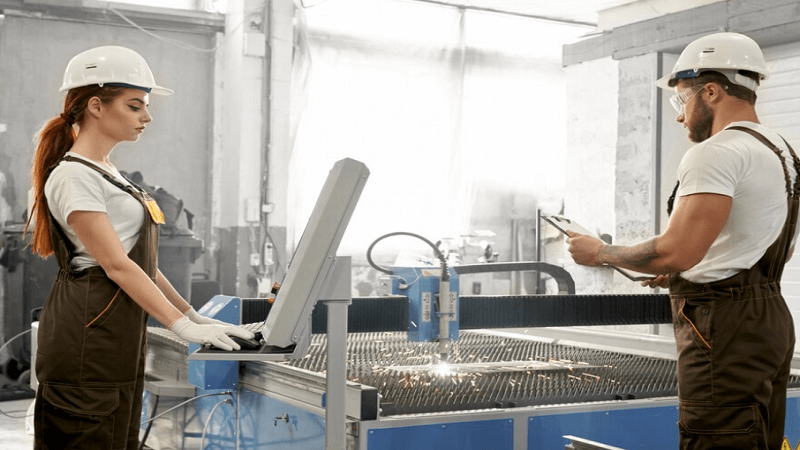The process of metal manufacturing is a complex and intricate one, involving a series of steps that are crucial in producing high-quality metals for various purposes. From the extraction of raw materials to the final product, each step requires precision and expertise to ensure that the resulting metal meets industry standards.
Extraction of Raw Materials
The first step in metal manufacturing is extracting raw materials, which are minerals or natural reserves that contain metal elements. This can include iron ore, copper ore, and aluminum ore, among others. The process of extracting these raw materials varies depending on the type of metal being produced.
In the case of iron ore, for example, it is extracted from open-pit mines using heavy machinery such as excavators and bulldozers. The extracted iron ore is then transported to a processing plant where it undergoes crushing and grinding to reduce its size.
Refining
Once the raw materials have been extracted, they are refined through various methods to remove impurities and other unwanted substances. This process is crucial in ensuring the quality of the final product as impurities can affect the strength and durability of the metal.
The most common method of refining is through smelting, where the raw materials are heated in a furnace to separate the metal from other elements. This molten metal is then poured into molds and left to cool, resulting in ingots that can be further processed.
Shaping and Forming
After refining, the metal is ready to be shaped and formed into its desired final product. This is where powder metallurgy comes into play. Powder metallurgy is a manufacturing process that involves shaping and forming metals in powdered form, using pressure and heat to bond the particles together.
The benefits of powder metallurgy include increased design flexibility, reduced waste, improved material properties, and lower production costs. It is commonly used in industries such as automotive, aerospace, and electronics.
When forming metals using powder metallurgy, there are two main methods: pressing and sintering. Pressing involves compressing the metal powder in a die to create the desired shape while sintering uses heat to fuse the particles together.
Finishing
The final step in metal manufacturing is finishing, which involves adding surface treatments to improve the appearance and properties of the metal. This can include painting, coating, or plating the metal for aesthetic purposes or to protect it from corrosion.
In addition to these steps, quality control measures are implemented throughout the entire process to ensure that the metal meets industry standards and customer specifications. This can include conducting tests for strength, durability, and composition.
Why Understanding the Process Matters
Understanding the intricate process of metal manufacturing is crucial for anyone working in or interested in this industry. It allows us to appreciate the complexity and skill involved in producing high-quality metals that are essential in our daily lives.
Furthermore, having a thorough understanding of the process can help identify potential issues and improve production efficiency. With advancements in technology, the metal manufacturing process continues to evolve, making it an exciting and dynamic industry to be a part of. So, individuals in this field need to stay updated on new techniques and processes.
In conclusion, metal manufacturing is a fascinating and intricate process that plays a vital role in our modern world. From extracting raw materials to finishing the final product, each step requires precision, expertise, and continuous improvement to produce metals that meet industry standards. It is an ever-evolving industry, making it an exciting field to explore and work in. So, let’s continue to learn and appreciate the intricate process of metal manufacturing.
Do you have any questions about this process? Let us know in the comments below. We would be happy to provide more information and insights!
